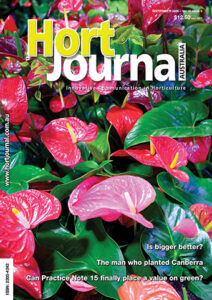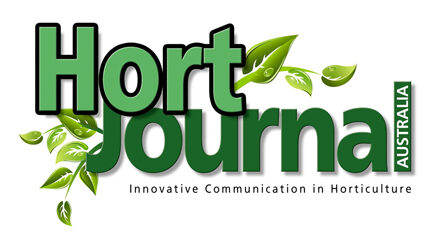
Beyond the screen: Connecting in person
Being editor of Hort Journal allows me to travel across the country meeting other members of the horticultural industry. Attending Greenlife Industry Queensland’s 2025 Green Expo on the Gold Coast recently reminded me of the importance of these events in our increasingly busy calendars.
When speaking with exhibitors and visitors alike at the expo, the recurring theme I heard was that industry events continue to remain important for connecting professionals. I was told multiple times by event-goers that this was the only time they saw some of their suppliers in person as all orders are handled online or over the phone. Now that technology dominates our working processes, it is imperative that we take time away from our computers and other devices to connect face to face. How do we get back to a time when the only screens in our industry were plant-based, syzygium or pittosporum for example! Connecting people and knowledge is one of the reasons we at Hort Journal continue to support these events. You can read more about this event in our ‘2025 Green Expo’ story on the following pages.
In next month’s issue, I plan to share a detailed report with you about The Landscape Association’s (TLA) 2025 Landscape Expo, held at the Howie Pavillion in Sydney on Wednesday 27 August. I also have my eyes on Nursery and Garden Industry Victoria’s (NGIV) Horticultural Trials Week in the first week of December. If you see me at one of these events, please do introduce yourself.
In other event news, the International Association of Horticultural Producers (AIPH) will hold their 2026 Meeting from 8-12 March 2026 in Sydney, Australia. The event is organised with the support of AIPH’s member in Australia, Greenlife Industry Australia. The 2026 meeting program will include a welcome dinner, International Horticultural Expo Conference, Horticultural Industry Conference, professional visits and local tours.
I am particularly excited to see the International Horticultural Expo included on the AIPH meeting ‘agenda’. Hosting such an event could provide the opportunity of a lifetime for one Australian city to recreate an urban landscape, leaving a permanent green legacy for its inhabitants. I wrote about this very topic for the April 2025 issue of Hort Journal, in an article called ‘Bringing the ‘Horticultural Olympics’ Down Under!’
If you are interested in attending the AIPH Meeting 2026, you can register your interest now on the AIPH website: www.aiph.org/event/aiph-meeting-2026/.
Turning my focus back to the content of this issue of the magazine, I am delighted to welcome Denis Crawford back into the Hort Journal fold. Denis is returning his Pest Files series to our pages, writing about the ‘pests that got away’. His first subject: the red imported fire ant (Solenopsis invicta), and its recent ‘excursion’ beyond the biosecurity zones of southeast Queensland. Denis will also be bringing us stories on the polyphagous shot-hole borer and Varroa mite in the coming months.
Green infrastructure expert Michael Casey reports on the Institute of Public Works Engineering Australasia (IPWEA)’s draft Practice Note 15. This document’s title does not exactly set hearts or minds on fire. However, Michael says that this draft framework has the potential to fundamentally shift the way green infrastructure is valued and managed across Australia.
Elsewhere in this issue, we have stories on averting contamination in tissue culture, plants in space, epacrid propagation, the edible tuber yacon, grants for farm trees, succession planning and more. And who was the man that planted Canberra? You will just have to read that article to find out!
Happy reading!
Gabrielle Stannus and your Hort Journal team
